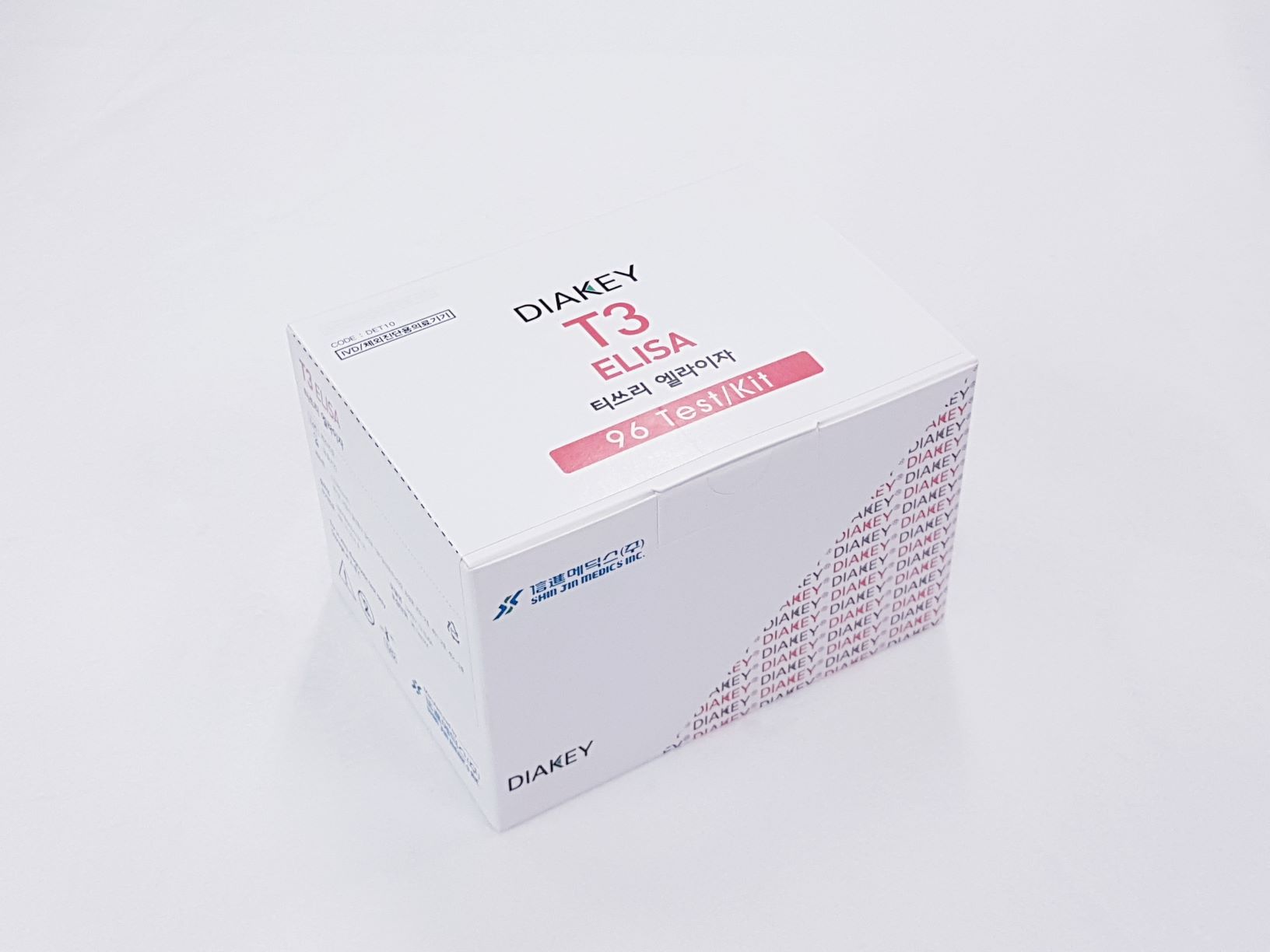Product

DIAKEY T3 ELISA
Intended Use
Enzyme Immunoassay for quantitative determination of Triiodothyronine (T3) in human serum or plasma
Principle of the Assay
The DIAKEY T3 ELISA is based on a competitive enzyme immunoassay (EIA). A measured amount of patient serum, and a constant amount of T3 conjugated with horseradish peroxidase are added the microtiter wells. During incubation, T3 and conjugated T3 compete for the limited binding sites on the anti-T3 antibody. After a 90 minutes incubation, the wells are washed 7 times by water to remove unbound T3 conjugate. A solution of TMB is then added and incubated for 10minutes. Resulting in the development of the blue color. The color development is stopped with the addition stop solution, and the absorbance is measured spectrophotometrically at 450nm. The intensity of the color formed is proportional to the amount of enzyme present and is inversely related to the amount of unlabeled T3 in the sample. By reference to a series of T3 standard assayed in the same way, the concentration of T3 in the unknown sample is quantified.
Handling Precaution
- Do not use mixed reagents from different lots.
- Do not use reagents beyond the expiration date.
- Use distilled water stored in clean container.
- Use an individual disposable tip for each sample and reagent, to prevent the possible cross-contamination among the samples.
- Rapidly dispense reagents during the assay, not to let wells dry out.
Use Precaution
- Wear disposable globes while handling the kit reagents and wash hands thoroughly afterwards.
- Do not pipette by mouth.
- Do not smoke, eat or drink in areas where specimens or kit reagents are handle.
- Handle samples, reagents and loboratory equipments used for assy with extreme care, as they may potentially contain infectious agents.
- When samples or reagents happen to be spilt, wash carefully with a 1% sodium hypochlorite solution.
- Dispose of this cleaning liquid and also such used washing cloth or tissue paper with care, as they may also contain infectious agents.
- Avoid microbial contamination when the reagent vial be eventually opend or the contents be handled.
- Use only for IN VITRO.

